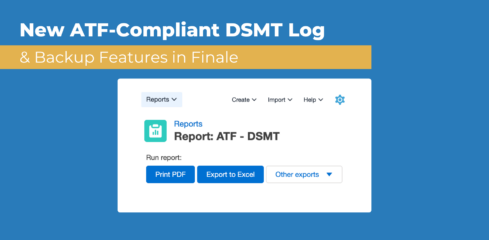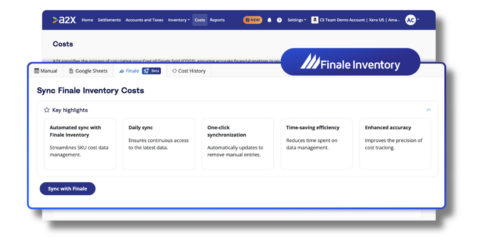5 Ways To Guarantee a Successful Warehouse Management System Implementation Project

Are you finding that warehouse management is not all that it could be? Are you running into problems such as misplaced stock items, misrecorded inventory numbers, long shipment and delivery wait times for customers and more? If so, these problems can cause serious issues for your business if they are not fixed quickly and for good.
Misplaced items and inaccurate inventory numbers can lead to lost and wasted money, while long shipment and delivery wait times for customers can lead to canceled orders, poor reviews and withdrawn business. In short, if your warehouse is not well-run and under control at all times, it could spell the end of your business in just a matter of months. Fortunately, you can make your warehouse one of the strongest areas of your business through a warehouse management system implementation project plan.
What Is Warehouse Management System Implementation?
A warehouse management system (WMS) is a software solution designed to transform your warehouses into highly organized, easily managed spaces to track your company’s inventory. A WMS is incredibly helpful because it aids you in keeping your warehouses organized and manages them so that they are always in sync and your business is able to run smoothly.
When implemented, a WMS tracks stock numbers, different product types and models and the locations of these products within the warehouse. Further, a warehouse management plan traces shipping, delivery, reordering of products when stock runs low, interfacing with suppliers, compliance with market and customer demand and updated website numbers.
All in all, a WMS should make it so that your inventory is always up to date and under control, whether it is stored in a single warehouse or multiple warehouses depending on your business’s size. This way, you can place more attention on other aspects of business management such as customer service, social media, marketing, promotions and more.
5 Ways to Guarantee a Successful Implementation Project
To ensure your inventory management strategy goes over as planned, make sure to hit these WMS implementation steps for a smoother process:
1. Choose a Savvy Software Vendor
Before you do anything, you must start by choosing the right software vendor. When looking to implement a WMS, there are many vendors out there to choose from. Some are great, others may not be a perfect fit. Since the process of WMS implementation can be rather difficult, you want to ensure that you have the best vendor on lock.
Finale Inventory is one of the top vendor choices because it offers tons of useful features, is able to keep up with the ever-growing and changing market and is easy to use. With Finale Inventory’s WMS implementation software, you will access multichannel inventory management, centralized inventory, order management, barcode scanning and more through the best cloud inventory software on the market.
2. Define Your Unique Requirements
As you move forward in your WMS implementation project, you must think about what your WMS project requires for success. Use a warehouse management system Request for Proposal (RFP) template to help outline and simplify your business’ necessary requirements.
You can submit your template to your chosen software vendor to help streamline the process so that you know you’ve asked all the right questions and made all the right inquiries going forward. When you ensure that your requirements touch on certain business processes unique to your company, you can set up an implementation schedule that works best for you and these requirements.
3. Choose the Right Players for Your Best Team
A successful WMS implementation project needs an excellent team, so you must wrangle your best and brightest for the best possible results. The right team should be comprised of a number of useful perspectives, unique experience in pertinent subjects, drive and attention to detail. Your ideal team should consist of the following essential roles:
- Project Manager: Your project manager will be the one at the forefront of the entire project effort. They should be involved in all aspects of the project and must have stellar problem-solving skills to ensure that everything runs smoothly during implementation. If other members of the team have questions or concerns, they should refer to the project manager for further direction.
- Warehouse Manager: Another important leadership position to have on your team is the warehouse manager. You will need someone familiar with the company warehouses who understands process requirements, budget limitations and how the warehouse works and is run. They should be the second in command for the team.
- On-Staff Engineer: Your on-staff engineer will be your IT person who is able to help monitor the entire implementation process. They may also help with testing the new WMS, customizing applications, integration and more.
- WMS Expert: One person on the team will be using the new WMS the most, and that person should be the WMS expert and trainer. The expert will properly train other members of the team as well as guide you, the business creator or manager, on features for day-to-day WMS operations. When implementation is complete, your WMS expert will likely look after and train new hires to ensure your new system is understood by the company team, new and old.
- Launch Team: Towards the end of your project, you’ll want to have a few extra team members to help launch your new WMS and go live. Your launch team can be other warehouse workers who are familiar with the new WMS and IT staff who can help iron out any issues or bugs with the system. When it’s time to go live, these extra hands will have each end of the WMS (warehouse operations and IT/software) covered.
4. Create a Plan
Once your team is assembled, it’s time to create your action plan on how to implement your WMS in a way that addresses the different needs, changes and issues that will come with making a major shift in an important business process. You plan should address the following criteria:
- Think about how you can cover implementation costs: When you identify what your project will require financially, you can create a budget that not only covers costs but ensures that funds are distributed in a smart and strategic way. Some costs include WMS training costs, consultant fees, on-premise installations, maintenance costs and extra hours. With this in mind, you should have a WMS schedule in place for the different steps of the process as a whole.
- Ensure information safety during this shift through data backups: Your data administrator will help migrate data into your new system. Think of it like getting a new phone and working to transfer all your photos, videos, files, messages, notes and more onto your newer, better system. Or better yet, select a cloud-based inventory solution that will store the data in the cloud so you do not need an in-house IT staff to ensure the data is properly backed up.
- Provide training for your current staff and team members: This ensures that each employee is able to handle the different issues that may arise, making your team even more efficient in the long run.
- Plan your launch accordingly: When is your ideal launch date? When do you want to finish your implementation project and have your business up and running under a new WMS? Think about a timeline for things to get done well as well as a time for your new business to emerge. It may be a couple of weeks, months or even a year depending on the needs of your business.
5. Launch Your System
At this stage, you’re almost ready to go live. Before you can officially launch, there are a few things you must do first to ensure the project and new WMS is ready to go:
- Follow up: Follow up with WMS implementation stakeholders so that you know their status and can confirm things are good to go on their end.
- Double-check: Ensure your team has addressed all WMS implementation requirements, concerns and needs.
- Test: Test your system according to common business patterns and data to ensure that it is ready for use. Also, test your network so that you can ensure it is ready to support the WMS and the increased demand that will come with it.
- Verify: Verify that your data is backed up, data migration was a success and all data is available and accessible at all times
Once you complete these steps, you can finally launch your new system and see how it adds to your management skills. Have your IT staff monitor how well orders are coming through and being processed by your WMS, and have your warehouse manager ensure that the warehouse is running smoothly and that orders are being shipped and delivered in a timely manner.
Remember: with your new WMS, a lot can change, so make sure you pick the best vendor to get the ball rolling. Finale Inventory offers many of the best features and tools on the market — all in a safe, cloud-based system.
After Launching Your Warehouse Management System
After implementing a warehouse management project plan for your business, take some additional steps to ensure optimal system performance. Remain in contact with your system supplier post-launch. Continually contacting your system vendor will provide you and your team with assurance that your system works correctly.
Having a system supplier representative on-site can help you work through any issues you might encounter as you shift toward using your new system. With a representative nearby, you can solve problems easily and quickly, and your transition to better warehouse management will be as smooth as possible for your team and clients.
As you continue settling into your new software, frequently test system processes and track data intake. Carefully monitoring your WMS will increase your warehouse’s accuracy when tracking and managing inventory. Especially in the early days of your launch, you will want to ensure orders are coming through your new system as usual.
Why Your Business Needs a WMS Implementation Project Plan
Implementing a warehouse management plan for your business can provide various benefits. When you integrate a WMS project plan into your system, you help your individual team members and overall business:
- Increase warehouse performance: When you use a WMS plan, you can cut costs for your business and add to your warehouses’ overall performance.
- Better your team performance: WMS project plans help decrease mistakes and losses so that your team can grow in productivity and performance.
- Ease your clients’ minds: With a strong WMS, customers can track their orders, leaving them assured that their purchases are in good care.
- Study your trends and patterns: WMS project plans enable you to learn about your warehouses’ inventory and demand trends, helping you further understand your industry. You can also track performance growth and development with a good WMS.
Download WMS Software for Your Business With Finale Inventory
When integrating warehouse management system software for your small or medium-sized business, it is important to partner with a supplier that will aid you throughout implementation from start to end to ensure the best transition for your business.
At Finale Inventory, we understand the importance of individual care and service. We will partner you with a manager who will handle your WMS integration with an approach unique to your company. With Finale Inventory, you will receive individualized care as you transition to a WMS program.
Begin your free trial of a warehouse management system project plan today with Finale Inventory.




